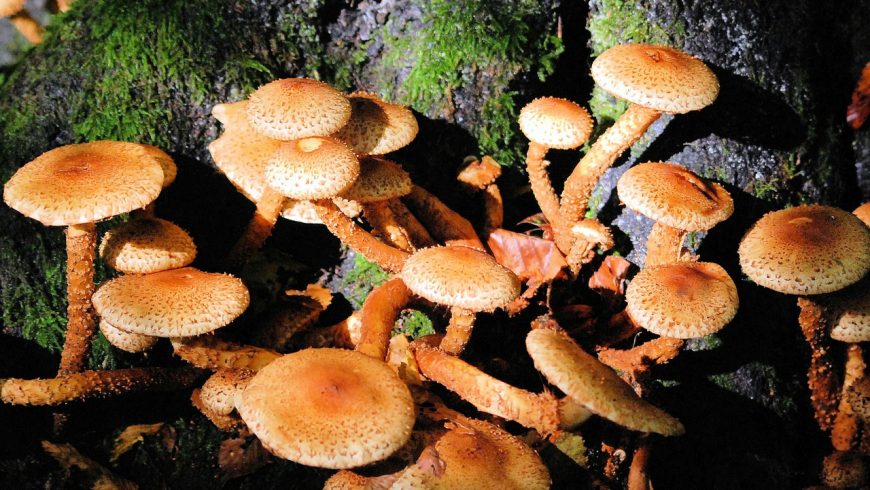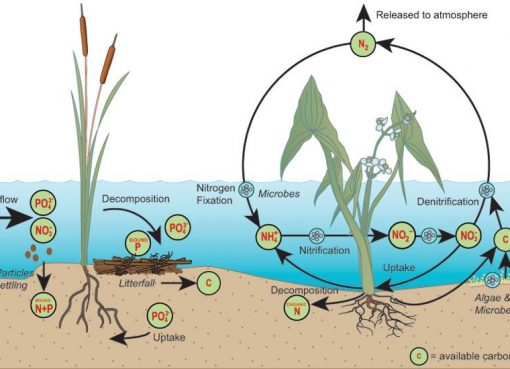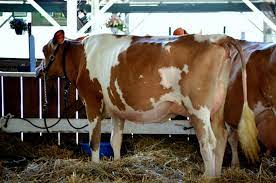Pratikha Mech1 and Siddhartha Shankar Pathak*
1Internee, *Assistant Professor,
Lakhimpur College of Veterinary Science
Assam Agricultural University, Joyhing, North Lakhimpur, Assam
INTRODUCTION:
Mycotoxins are secondary fungal metabolites of worldwide concern due to their potential toxicity to animals and human alike. Fungal growth occurs in an aerobic condition in numerous raw feed ingredients. There are almost two hundred species of fungi that are capable of producing mycotoxins. Mainly, three genera of fungi, viz., Penicillium, Aspergillus, and Fusarium are associated with production of potent mycotoxins. While more than 500 known mycotoxins are formed by these fungi, only a few of them are pathogenic. Season and harvest time play a critical role in fungus growth and mycotoxin formation. It has been estimated by FAO that mycotoxins contaminate almost 25 percent of crops worldwide every year resulting in the wastage of roughly one billion metric tons of feed and feed products. Mycotoxins are given special attention because of their adverse health effects, food spoilage, and economic consequences shown in international food and food products. Feed quality, organoleptic characteristics, and nutritional quality are affected by the presence of microscopic fungi.
TYPES OF MYCOTOXINS:
The word mycotoxin has been derived from the Greek word mykes or mukos which means “fungus” and the Latin toxicum meaning a “poison”. It is a toxic secondary metabolite produced by some fungi, commonly known as molds. Most fungi are aerobic (use oxygen) and are found almost everywhere in extremely small quantities due to the minute size of their spores.
Several different types of mycotoxins are recognized: aflatoxins that are produced by Aspergillus flavus; T2 fusariotoxins produced by Fusarium spp. (mouth lesions and thin eggshells); Ochratoxins produced by Aspergillus ochraceus (interferes with functions of kidney, proventriculus, and gizzard) etc.
- Aflatoxin:
It is produced by Aspergillus flavus, A. parasiticus, and some Penicillium spp. It is generally produced in a variety of mold-contaminated food like peanuts, rice etc. There are two major types of aflatoxins: B1 and G1, which show blue and green fluorescence, respectively, when exposed to UV light. Other types of aflatoxin include B2, G2, M1, M2, and P1 which are derivatives of B1 and G1. Among them, B1 is the most toxic. After ingestion, aflatoxin binds to chromosomal DNA, and causes point and frame-shift mutations. By inducing mutation, they cause cancer of the liver.
- Trichothecenes
Trichothecenes are produced by a variety of fungi from the order Hypocreales, including Fusarium, Myrothecium, Stachybotrys and Trichoderma species. Trichothecenes are common field toxins found in grains and silages. Examples include deoxynivalenol (DON or vomitoxin), nivalenol, T-2/HT-2 toxins, and diacetoxyscirpenol (DAS). Susceptibility to trichothecenes varies between mycotoxin types, mycotoxin concentration, animal species/breed, and management systems. Swine are often considered one of the more sensitive species to DON, while T-2/HT-2 toxins are toxic to most species.
- Ochratoxin:
There are at least seven types of structurally related ochratoxin, of which type A is the most common and the most toxic. It is produced by many Aspergillus and Penicillium species like – A. ochraceus, A. alliaceous, A. mellis, P. viridicatum and P. cycloplum. Like other mycotoxins, it is heat-stable and is not damaged during processing. When ochratoxin is ingested, it induces mitosis and causes cancer of the kidney.
- Zearalenone:
Zearalenone is produced by fungi of the genus Fusarium. It often occurs in combination with DON in naturally contaminated cereals or forages. This mycotoxin mimics the activity of hormones (as an estrogen analog), causing most of the reproduction-related symptoms seen in pregnant animals.
MANAGEMENT OF MYCOTOXINS IN FEED:
Management practices like withdrawal of mycotoxin-contaminated feed/feed ingredients or change of feed at the farm could provide partial protection to poultry from the toxicity as well as from mycotoxin residues. In other words, if there is a foul smell from the feed with lump formation, then it’s use must be avoided. Bulk storage of grains must be well-ventilated, and the materials should be well-protected from rain. Aflatoxins and other mycotoxins are not produced at temperatures below 5 to 8°C. The moisture level of the grain should be kept below 13% to prevent mold formation. Periodic cleaning of all handling equipment with 5-10% bleach solution will help control mold growth as well as to some extent destroy the aflatoxins present. The level of feed holding time should be kept as short as possible as the level and incidence of mycotoxin contamination increases after the feed is manufactured.
- Routine analysis (mycotoxin screening):
Screening feed ingredients and feedstuff for mycotoxin contamination before formulation of poultry ration is important. There are two methods of toxin analysis; the biological method- qualitative and identification method, and the chemical method also called as quantitative method. The quantitative method includes chromatographic and non-chromatographic. Following are a few methods of mycotoxin detection through the chromatographic methods: Microcolumns, Thin layer chromatography (TLC), High-pressure liquid chromatography (HPLC), Column chromatography, and Gas Layer chromatography (GLC). Thin Layer Chromatography is commonly used, which involves the separation of a mixture of compounds between two phases, stationary and mobile, with an estimation of mycotoxin fluorescence in reference to the standard mycotoxin concentration. Non-chromatographic methods of toxin analysis includes Fluorotoximeter, mass spectrometry, and Radioimmunoassay.
- Mycotoxin decontamination methods:
There are three methods of mycotoxin decontamination.
- a) Physical methods:
- Antimycotic agents like sorbic acid and sorbate, propionic acid and propionate, benzoic acid, benzoates, and parabens, and acetic acid and its derivatives prevent mold growth and interfere with mycotoxins production.
- Herbs and spices like cloves, cinnamon oil, mustard, garlic, and oregano.
- Low oxygen concentration (<1%) and/or increased concentrations of other gases (90% of Carbon dioxide) depress mold growth and mycotoxin formation (Bullerman et al., 1984).
- Density segregation of contaminated grain and oilseed involving sorting and delineating good versus contaminated kernels by floatation.
- Irradiation involving gamma or electronic irradiation is highly effective for destroying fungal spores. Simple exposure of contaminated grains to sunlight substantially reduces mycotoxin levels.
- Mechanical separation of contaminated grains.
- Processing of food: wet milling, malting, autoclaving, brewing, dry and oil roasting.
- Solvent extraction
- b) Chemical methods:
- Ammoniation: Treatment with aqueous ammonia or ammonium hydroxide, with or without heat and pressure is currently the best and most effective way to destroy mycotoxins. This method not only detoxifies mycotoxins but also prevents mold growth. It has been shown that 5% NH3 detoxify orchatoxins in the feed at 70 °C in 96 hours.
- Ozonization: several studies indicate that ozone degrades aflatoxins in corns and cottonseed meals and degrades toxins, , deoxynivalenol and moniliformin.
- Structural degradation: numerous chemicals including acids, bases, aldehydes, bisulfites, oxidizing agents, and various gases have been tested for the ability to degrade or detoxify AFB1 and other mycotoxins.
- c) Biological methods/ amelioration:
- Mycotoxin-binding agents: like activated carbons, bentonites, clay, hydrated sodium, calcium alumina silicate, and zeolite have currently been used to counteract mycotoxicosis in poultry. The commercially available synergistic blends of mycotoxin binders are found to be beneficial against the commonly occurring mycotoxins in poultry species. These sorbents are nutritionally inert and reduce the bioavailability of various mycotoxins by absorption on their surface in the intestinal tract.
- Microbiological binding agents: Mannan oligosaccharide (MOS) extracted from the cell wall of Saccharomyces cerevisiae has shown broad-spectrum efficacy against most mycotoxins. Certain strains of Bifidobacterium, lactic acid bacteria, and propionic bacteria have cell wall structures that can bind mycotoxins and limit mycotoxin bioavailability in the body. Bifidobacterium animalis and Lactobacillus acidophilus were found to be effective against OTA and patulin, respectively.
CONCLUSIONS:
The problem of mycotoxicosis is not so easy to solve and requires constant attention throughout the entire process of grain harvest, shipping, storage, feed manufacturing and formulation. The complete elimination of molds and their toxins is practically impossible; so, finding such agents that can bind the toxins selectively in the gut is the need. The possible presence of toxic residues in poultry products, which enter into the food chains, may have a potential risk of their detrimental effects on human health. So, there is an urgent need to set a rational limit for such mycotoxins for the economic growth of the poultry industry.
REFERENCES:
Bullerman, L.B.; Schroeder, L.L. and Park, K.Y. (1984). Formation and Control of Mycotoxins in Food. J. Food Prot. 47(8): 637-646. doi: 10.4315/0362-028X-47.8.637.
AUTHOR INFORMATION:
- Name of the Author/Authors: Pratikha Mech1 and Siddhartha Shankar Pathak*
- Designation of Author/Authors: Internee 1, Assistant Professor*
- E-mail ID of Author/Authors :
*sidd.89@aau.ac.in; 1pratikshamech@gmail.com
- Name and address of the Institute to which the Author/Authors are associated:
Lakhimpur College of Veterinary Science,
Assam Agricultural University,
Joyhing, North Lakhimpur – 787051




